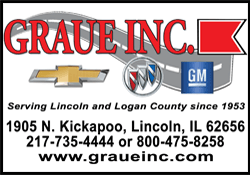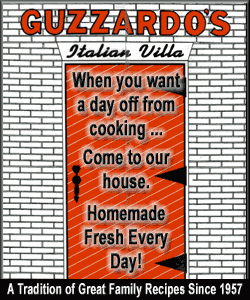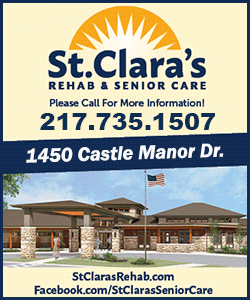|
City of Lincoln considers
permitting golf carts on city streets
 Send a link to a friend
Send a link to a friend
 [September 17, 2021] [September 17, 2021]
On the Monday night voting agenda of the Lincoln City Council will
be a call to approve the operation of golf carts on city streets.
The agenda item comes after several months of research by city
attorney John Hoblit and Alderman Rick Hoefle at the request of
Lincoln resident Jack Merreighn.
On May 25th, Merreighn brought the request to the council, that they
consider permitting golf carts as an alternative means of
transportation in Lincoln. He said that there were other communities
that have permitted the carts successfully and he felt that it would
be an asset to many members of the community to be permitted to have
the carts in Lincoln.
Merreighn said that the carts could be regulated by the city and
rules set to assure the safe and responsible operation of the
vehicles. He suggested that the city could set speed limits, require
proof of insurance and establish a minimum age for operators to help
assure the carts were operated responsibly.
Merreighn said he saw the carts as a convenient alternative for
those who donít have other means of transportation and currently
walk to the downtown area to do their shopping. He said other
communities are embracing the use of golf carts and he thought the
city should too.
During that initial conversation Kevin Bateman said that his biggest
concern was the fact that there are two state highways that go right
through the city. It was his understanding that the carts are not
allowed on highways, so it would be pretty difficult for anyone to
travel outside of the few blocks that constituted their own
neighborhood.
Merreighn said he had researched the legality of the carts and it
was true that they could not be operated on state highways. He
thought though that perhaps the city could establish legal crossings
for the carts like crosswalks with signage to advise motorists of a
golf cart crossing ahead.
Wanda Lee Rohlfs said the city has talked about establishing bike
paths, and she wondered if perhaps there could be paths for golf
carts, keeping them off of, or to the edge of city streets.
Bateman said one thing he would want to insist on is that the carts
be equipped with turn signals and other safety devices and perhaps
even a strobe light on top to draw attention to the carts on the
road.

At that first meeting it was decided that the city did not have
enough factual information to proceed with a vote. Rick Hoefle was
asked to work with attorney Hoblit to outline some rules for the
city to consider at a later date.
Since that time, not a great deal has been said about the golf carts
in council meetings until the August 24 Committee of the Whole
meeting.
Hoblit said then he had researched the state laws and indeed there
would be no usage allowed on state highways. He said this would have
an impact on residential areas off of Illinois Route 10, all of
Woodlawn Road and Keokuk Street, all of Fifth Street and North
Logan, and portions of Broadway and Kickapoo Streets that constitute
old Route 66/Business 55.
At the same time, the state does permit golf carts to cross the
highway at intersections so areas where the state routes could be
crossed would still work for the golf carts. In some areas it would
not work at all, such as anyone coming out of the Mayfair addition
(N. Kickapoo Street) or out of Campus View Dr. (Lincoln Christian
University.)
Also, Hoblit said that the carts used on public roads had additional
requirements over a cart used on the golf course. Carts on streets
must have a rear view mirror, seat belts, turn signals and more. The
carts must also have a permit and pass a safety inspection by local
law enforcement.
Once legally permitted, there would need to be a sticker of some
type placed on the cart in an area readily visible to law
enforcement.
Hoblit said the city could and should charge an inspection fee for
the carts to cover the time and effort of the police department.
There would also be a permit fee and the city should pass an outline
of violations and fines associated with the use of the carts.
It was also recommended that there be rules for the time of day the
carts can be used. It was suggested no earlier than 30 minutes
before sunrise and no later than 30 minutes after sunset.
Fees and fines were discussed and it was recommended that there be a
$100 annual permit fee, $25 inspection fee, and a $250 reinstatement
fee or fine if carts were operated illegally.

Steve Parrott said he wasnít sure why the city needed to inspect the
carts because no one inspects cars, not the city or the state.
Deputy Police Chief Matt Vlahovich was on hand for that meeting and
said that cars are now ďstandardizedĒ where all that come out of the
factory have the same safety features. There is no standardization
for golf carts.
Parrott also asked who was getting the license or permit, the driver
or the cart?
Hoblit said the cart would get the license and the license or permit
would be revoked if there were violations.
[to top of second column] |

That brought up the question of multiple drivers for one cart. If one person
violates the law, then all the other drivers in the household would be denied
usage; was that fair?
Bateman said again, as he had at the last discussion, that the highway crossings
were going to be the big problem. He wondered if there were not a solution that
could be found.
He continued on saying that there were a number of questions, and he felt that
there needed to be a little more ďtweakingĒ on the ordinance before it was voted
upon.
Hoefle and Hoblit agreed to continue working on the ordinance.
On September 14th, the topic came back before the council for what Hoblit and
Hoefle were hoping would be the last time. The council discussed the changes
that had been made during the ďtweaking process.Ē

Perhaps the most significant finding since the last meeting was that the city
could request a variance from the state for cart usage on state routes. Hoefle
said that he felt that if the city passed the ordinance to allow golf carts, it
would be easier for Hoblit to seek and receive that variance. With the variance,
the carts would be allowed throughout the city.
Bateman said that since the talks had begun on golf carts, he had received many
requests for the city to expand the allowance to include UTVís, which are
utility vehicles with four wheels, a bench seat and steering wheel and a cargo
bed on the back. During the discussion, the design of the UTV was pointed out
when some wondered if the UTV and the ATV were in the same category. It was
explained that ATVís which are considered all-terrain vehicles typically are
defined by the fact that they have a seat that must be straddled and are
operated with handlebars instead of a steering wheel. ATVís would not be
permitted with this ordinance.
It was also noted that UTVís have the capability to travel at higher speeds than
golf carts. However, they would still be required to follow the speed limits
within the city or face fines.
Rohlfs said she didnít see that it would make much difference. She said that
cars exceed the speed limit and she knows that these UTVís will as well, but
they are not as safe as cars. She has strong objections to permitting the UTVís.
Sam Downs appeared to object to carts and UTVís because of the safety aspects.
He said that he felt the city was opening the door for people to get hurt and he
struggled to get behind that.
Hoefle noted that when the city approved the e-scooters, Downs voted in favor.
He said he didnít quite understand the issue now.
Downs said the scooters would be easier for drivers to get out of the way than a
golf cart or UTV would be. He also said that the scooters could go on sidewalks,
off the busy streets.
Hoefle didnít see it that way, and he added that the carts would have an
economic impact on the downtown, because people who do generally have to walk to
do their shopping could have the option of driving their golf cart.

That brought about a question from Bateman about parking. He asked if the golf
carts would be able to park two to a space downtown. He said that motorcycles
can park four to a space and he felt golf carts could and should be permitted to
park two to a space.
Vlahovich was on the phone this week and was asked to weigh in about the UTVís.
He said that yes they were faster; they were also generally bigger than a golf
cart and louder during operation. He said they do not have the safety
accessories such as turn signals.
The UTVís portion of the conversation seemed to bog down the possibility of a
vote in the near future. Mayor Tracy Welch, attempting to bring some kind of
conclusion to the conversation said that as he saw it the city had some options
to consider. First, it could pass the golf cart ordinance as is and consider the
UTVís later. Second, the council could put the vote on hold until the UTVís are
researched further and incorporated into the existing ordinance.
Hoefle said that he could see this topic quickly going the way of the ďgreat
chicken debate.Ē He said he was done though. The council could vote on what is
in front of them for golf carts, or they could find someone else to work on this
project, as he would not be part of dragging it out.
Bateman said then to just drop the UTVís and the city could move forward with
what is done and look at UTVís later.
The item was then placed on the agenda for Monday, September 20th. As is always
the case, the council has the right to table any action item if they feel they
are not prepared to make an informed decision.
[Nila Smith] |